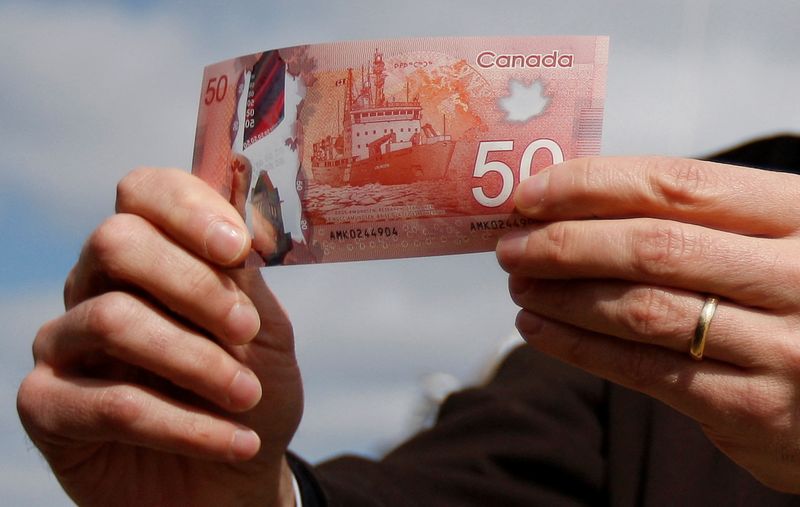Forex
Canadian dollar seen up but gains restrained by mortgage resets


© Reuters. FILE PHOTO: Bank of Canada Governor Mark Carney holds the new Canadian 50 dollar bill, made of polymer, in front of the CCGS Amundsen, the Arctic research vessel depicted on the back of the new bill, in Quebec City, March 26, 2012. REUTERS/Mathieu Belange
By Fergal Smith
TORONTO (Reuters) – The Canadian dollar is set to strengthen over the coming year if the U.S. Federal Reserve cuts interest rates as expected, but its gains could be held in check as mortgage renewals weigh on household spending and economic growth, a Reuters poll found.
The median forecast of 40 foreign exchange analysts surveyed in the Feb. 1-6 poll was for the to strengthen 0.7% to 1.34 per U.S. dollar, or 74.63 U.S. cents, in three months, matching the forecast in January’s poll.
It was then predicted to advance to 1.30 in a year, also matching the previous month’s forecast.
The expected strengthening comes as some analysts forecast broad-based declines for the U.S. dollar.
The greenback is likely to weaken in 2024 as U.S. economic growth slows to a pace that is more in line with the rest of the world and the Fed starts cutting rates, said Jayati Bharadwaj, a global FX strategist at TD Securities, adding markets could then focus on the boost to growth from “global easing cycles.”
Canada is a major producer of commodities, including oil, so its economy could benefit from an improved global outlook. Still, analysts expect the pace of mortgage renewals to hold back its economy.
Canada’s mortgage cycle is particularly short – the typical loan term is 5 years or less, versus 30 in the United States – and many households are likely to renew at higher rates after borrowing heavily at rock-bottom levels during the pandemic.
Upcoming mortgage resets and the Canadian dollar’s lower sensitivity to moves in the greenback than some other Group of Ten (G10) peers could restrain gains for the currency, Bharadwaj said.
“We expect CAD to appreciate on our broad USD outlook but it is unlikely to be the G10 outperformer,” said Bharadwaj.
(For other stories from the February Reuters foreign exchange poll:) (This story has been refiled to remove quotation marks in the first clause, in paragraph 5)

 Forex3 years ago
Forex3 years agoForex Today: the dollar is gaining strength amid gloomy sentiment at the start of the Fed’s week

 Forex3 years ago
Forex3 years agoUnbiased review of Pocket Option broker

 Forex3 years ago
Forex3 years agoDollar to pound sterling exchange rate today: Pound plummeted to its lowest since 1985

 Forex3 years ago
Forex3 years agoHow is the Australian dollar doing today?

 Cryptocurrency3 years ago
Cryptocurrency3 years agoWhat happened in the crypto market – current events today

 World3 years ago
World3 years agoWhy are modern video games an art form?

 Commodities3 years ago
Commodities3 years agoCopper continues to fall in price on expectations of lower demand in China

 Economy3 years ago
Economy3 years agoCrude oil tankers double in price due to EU anti-Russian sanctions





















